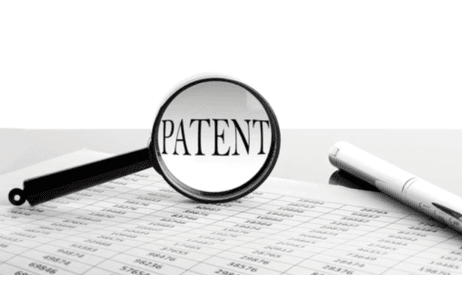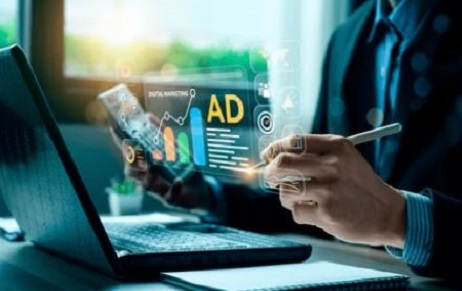Introduction What is Artificial Intelligence? Creating computer systems capable of carrying out activities that need…
Patents: The Cornerstone of Technological Advancement and Economic Development
INTRODUCTION
As a result, it is important for anyone involved in processes of innovation as well as the protection of the resulting property rights to develop a clear understanding of patents. It also enables inventors to abstain from their innovative creations for a certain period as well as encourages the development of technology and economic growth. they are: the process of obtaining a patent, classification of patents and other types of intellectual assets, and the effects of patent violation are among the vital issues that illustrate the significance and consequences of patent law. As this more general discussion of patents will show, questions of who may obtain a patent, what one must do to get one, the inviolability of the invention and the protection that the law affords the patentee are important ones.
REQUIREMENTS FOR OBTAINING A PATENT
Patenting can be defined as securing exclusive rights to an invention by fulfilling certain patents legal requisites. Pertaining to acquiring a patent, essential criteria can be categorized as novelty, non-obviousness, utility and enablement.
Originality relates to the legal norm that invented products and processes must not have been disclosed prior to the filing of the patent application. Non-obviousness refers to the fact that the invention must not be something that is quite apparent to anyone who understands the area of technology in question, given what is already known at the point of filing. The third criterion which defines an invention as useful is the definition of what is useful and what serves a practical purpose in people’s everyday lives.
Furthermore, the above captured specifications must be exhaustively described in the patent applications, from the technical nature, its features, and how it can be made and used. This disclosure assists individuals specializing in the subject area to comprehend and implement the invention without violating the patent’s compatibility when the patent term is outdated to support the expansion of knowledge.
These are usually achieved by carrying out a search of prior art which covers any kind of technology developed previously in relation to the invention then preparing a meticulous application of a patent that enshrines detailed description on the distinguishing feature and inventive step related to the invention. The issued patent is then scrutinized by a patent office so as to establish the compliance of the invention to the principles of patentability.
PATENTING AN IDEA
Although it is relatively easy to invent an idea or a concept, you cannot patent an idea alone but rather an object, method, technique or product. In order to obtain a patent, the invention must meet certain requirements and these are known as conditions of patentability that include the conditions of novelty, non-obviousness as well as utility of the invention.
If the novelty of the invention, one of the non-legal requirements for obtaining patent protection, necessitates that the invention is new one and has not been disclosed to the public prior to the filing of patent application. In addition to novelty, the invention ought to be non-obvious, which is a legal criterion that states the invention should not be obvious to a skilled person in the field. Utility means that the invention provides some sort of usefulness with the help of which one need not necessarily be presented.
The primary misconception is that with an idea in mind or a concept one can easily go in for a patent. To substantiate the desirable features you have to turn the concept into an actual object – a product, a process or a machine – and prove that it is something that could be useful and has not been invented yet. However, this usually involves filing for a patent, which entails the disclosure of information concerning the invention and how it works as well as how it is made or used.
In any case, it is pivotal to highlight the fact that while ideas as such cannot be patented, they may still be useful in some sense, and therefore can be protected to some extent, for example, through the help of non-disclosure agreements.
DIFFERENCE BETWEEN A PATENT, A TRADEMARK, AND A COPYRIGHT
Patents, trademarks, and copyrights are all forms of intellectual property but do vary in their purpose, their rules, and the subject to which they apply.
A patent provides a legal right to the owner that he or she has invented something new or discovered a new and useful process, machine, composition of matter or new use for any existing process, machine, or composition of matter. It provides the inventor with exclusive control of the manufacture, utilization, sale, or even the importation of the patented invention for a specific period before the patent expires, this is usually 20 years from the date of filing.
Trademark on the other hand relates to any symbol, words, phrases, symbols or designs that seek to identify the origin of the goods or services of one trader from the same goods or services offered by another trader. It enables the consumer to differentiate and differentiate between the product or services of one trader from that of the other trader thereby eliminating confusion to the public, and protecting the goodwill/reputation of the owner of the mark.
Copyright safeguards creations/works of the author’s mind, any type of work that is essentially literary, artist, musical or dramatic and which is tangibly embodied. It gives the owner of the work the sole authority to copy, sell, stage, perform, display and transmit the work and make adaptations of the original work.
Patent right safeguard inventions, trademark safeguards brand while also catering a significant role on the stimulation of innovation, creation and investment on different fields as does copyright to safeguard artistic works.

PATENTS PROTECT INVENTIONS
Patents offer protection to inventions through issuing the inventors proprietary rights over their innovations for a set of time, commonly in this case it is for the next 20 years from the time the patent has been filed. These exclusive rights allow the inventors of certain products to exclude everyone else from using, selling, manufacturing, and even marketing the inventions.
In turning inventions into property by awarding people the legal rights to them patents promote development of new ideas and investment in research. The inventors have the tendency of disseminating information regarding their inventions and allocate their resources to the improvement of the invention whenever they have confidence in the legal protection of the invention.
Additionally, patents guarantee the publicization of invention information by mandating inventors to provide information about their inventions through patent documents. This disclosure helps other persons possessing certain degree of proficiency in the field to get to know the invention and advance the undertaking, develop it, and bring new ideas and solutions.
There is general agreement on the fact that patents are essential driving forces for inventors, to invent new technologies, expand knowledge, and promote economic development. According to the matter of concern patents are very important and helpful in devolving new inventions of society as it gives protection to inventors and encourage people to develop something new for the improvement of society.
PATENTED INVENTION BE USED WITHOUT PERMISSION
Patent infringement refers to the unauthorized using of an invented idea, product or process which is prohibited by law and may lead to legal redress. When a person or company commits a patent infringement, this means they use, making, selling, or even importing the invention that is protected by the patent but without the patent owner’s permission. This is the practice of engaging in activities that are prohibited in the patent that the patent office awards the patent holder.
The claimants have exclusive rights of the patent and this acts as a legal enforcement procedure where the patent holders can sue the infringers of their patents. If the court decides that infringement has taken place, then certain orders and directions maybe given by the court to the infringing party to cease any actions that may be considered an infringement, the court may also award damages to the patent holder for any losses suffered due to the infringement.
Moreover, patent infringement may lead to legal consequences and higher penalties and fines in addition to reputational loss and market share loss by the infringing party. Consequently, communities of people as well as individual owners of businesses should respect patent rights, and ensure that they seek for appropriate licenses or permission from the patent holders before getting into the use of patented inventions, for they can be held responsible for infringement.
INFRINGEMENT OF A PATENT
An example is a situation where someone interferes with a patent; this implies they are using, creating, marketing, and/or bringing into the country a patented product without the patent owner’s approval. There is a definition for patent infringement which means the infringement of the exclusive rights that are recognized to the patent holder per the patent office.
The penalties that can be incurred for infringing one’s patent can be considered to be stiff. The owner of patent presumably has the authority to protect their invention using legal means, often involving a court trial. In the event that the court determines that an infringement has taken place, it may grant orders for the cessation of the infringing activity and further provide damages to the patent owner as a result of damages incurred from infringement.
Such harm may comprise direct for loss of profits and lost licence fees, and sometimes punitive for infringement committed in bad faith. Moreover, patent infringement lawsuits may involve huge costs of time for both parties involved and may even involve substantial legal sports to defend.
It is also important to note that there are other legal ramifications of patent infringement some of which include importation ban, injunction against the sale of the products that bear the infringed patents amongst others. Hence, it becomes crucial for the people and companies to know and recognize the patent rights at their best, whether they wish to use a certain invention or some of its parts as they are protected by patents or not and thus require permission from the patent holder to do so.
CONCLUSION
In conclusion, patents are instrumental in stimulating innovations on the protection of inventors and the advancement of economic development. They must be complied with by the inventors as they include such conditions as newness of products, non- obviousness, and use to try to ensure that only innovations that are original and can benefit society are granted a patent. Ideas themselves cannot be patented but in practical usage of them there are rights for patents. Patents as well as trademarks and copyrights are some of the strong pillars of the system of protection on persons creations. It thus follows that the incentives enjoyed under the protection of patents enables inventors to come forward and share new technologies and knowledge. Appreciating the need to uphold patent rights and also recognizing the ramifications of infringement contribute to the establishment of a proper market environment and protections for innovators. In this third way, patents remain a critical tool for encouraging continued innovation, creativity and prosperity in both the economy and society.
Author : Kaustubh Kumar, in case of any queries please contact/write back to us via email to chhavi@khuranaandkhurana.com or at IIPRD.
REFERENCES
- https://www.epc.nl/en/blog/does-a-patent-expire-after-20-years-not-always
- https://www.uspto.gov/patents/basics/patent-process-overview
- https://www.investopedia.com/terms/p/patent.asp
- https://www.wipo.int/patents/en/faq_patents.html
- https://www.pitchlabs.org/library/legal/protections/what-is-a-patent?gad_source=1&gclid=CjwKCAjwgdayBhBQEiwAXhMxtuhx76x5ErXMr7HK5KifvxQinZvUm2FEgSdzBEB58k2HBbaMxixLVBoCPcUQAvD_BwE
- https://www.government.nl/topics/intellectual-property/question-and-answer/what-are-the-criteria-for-patenting-my-invention



